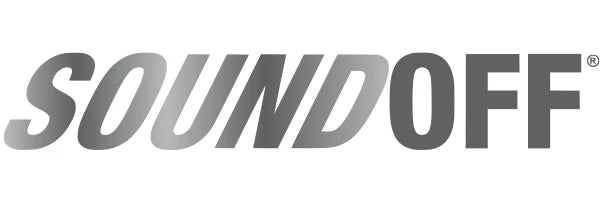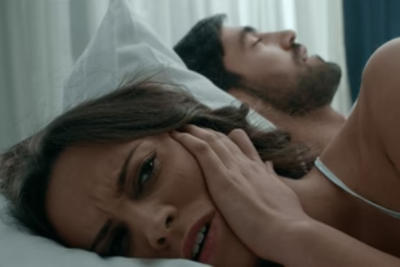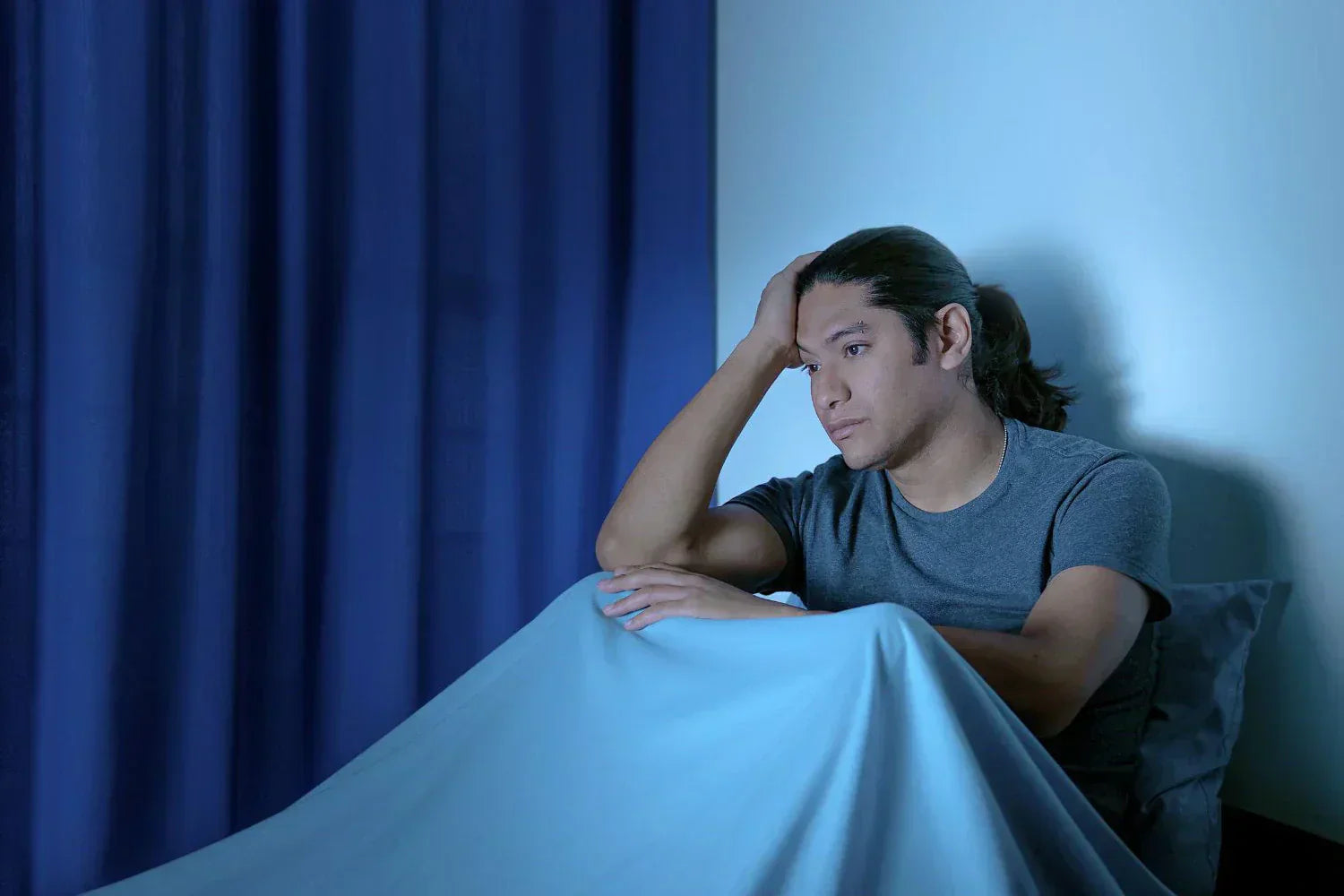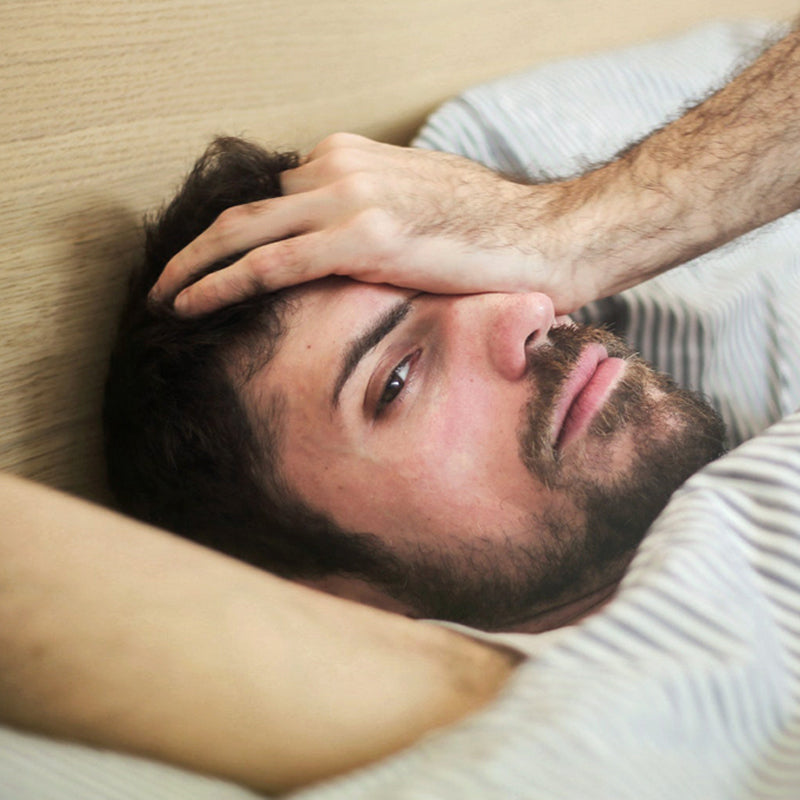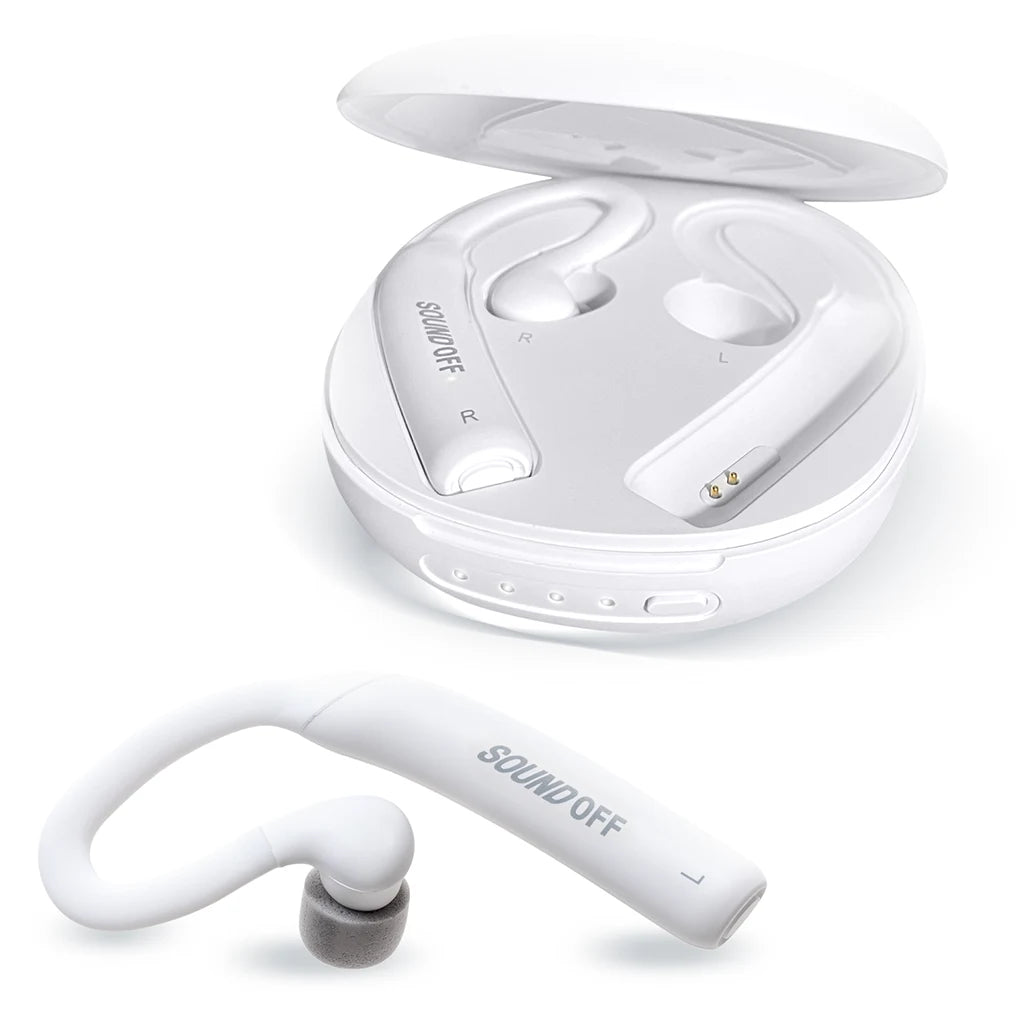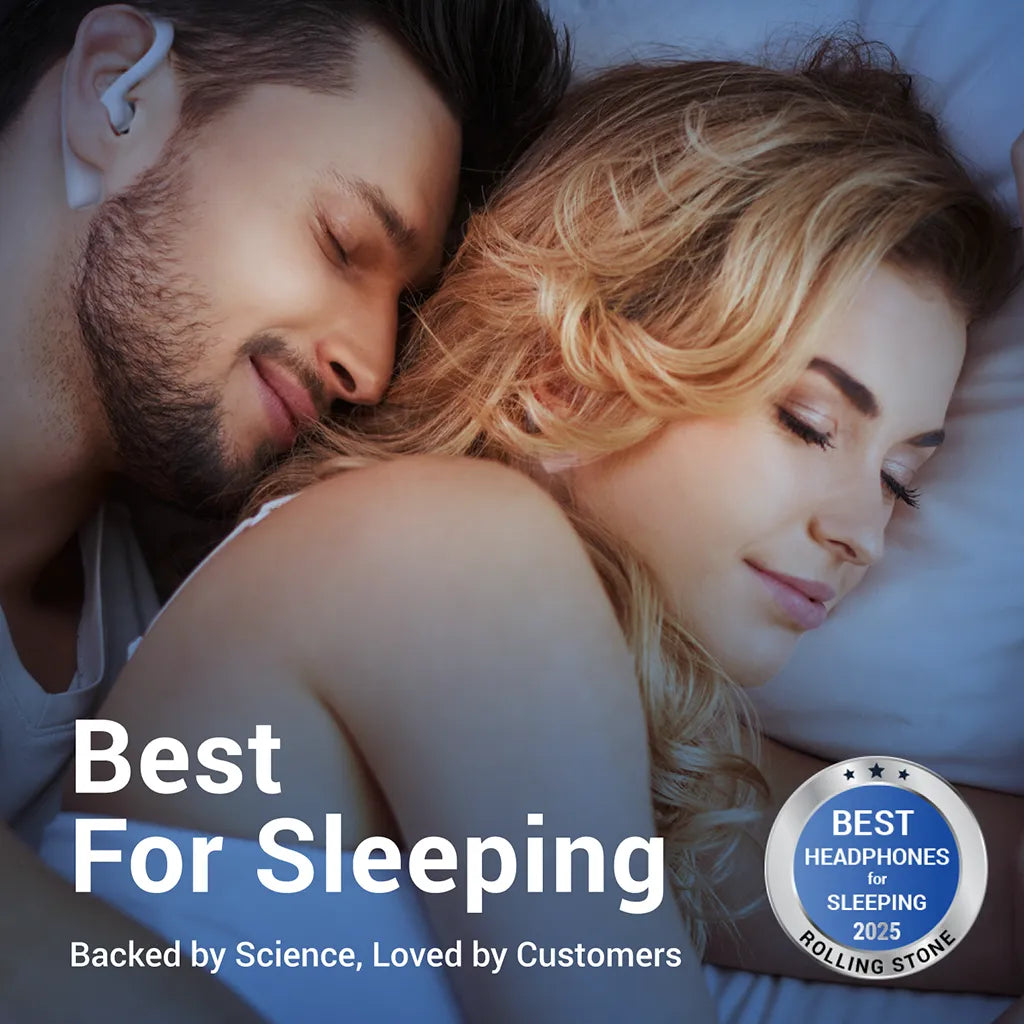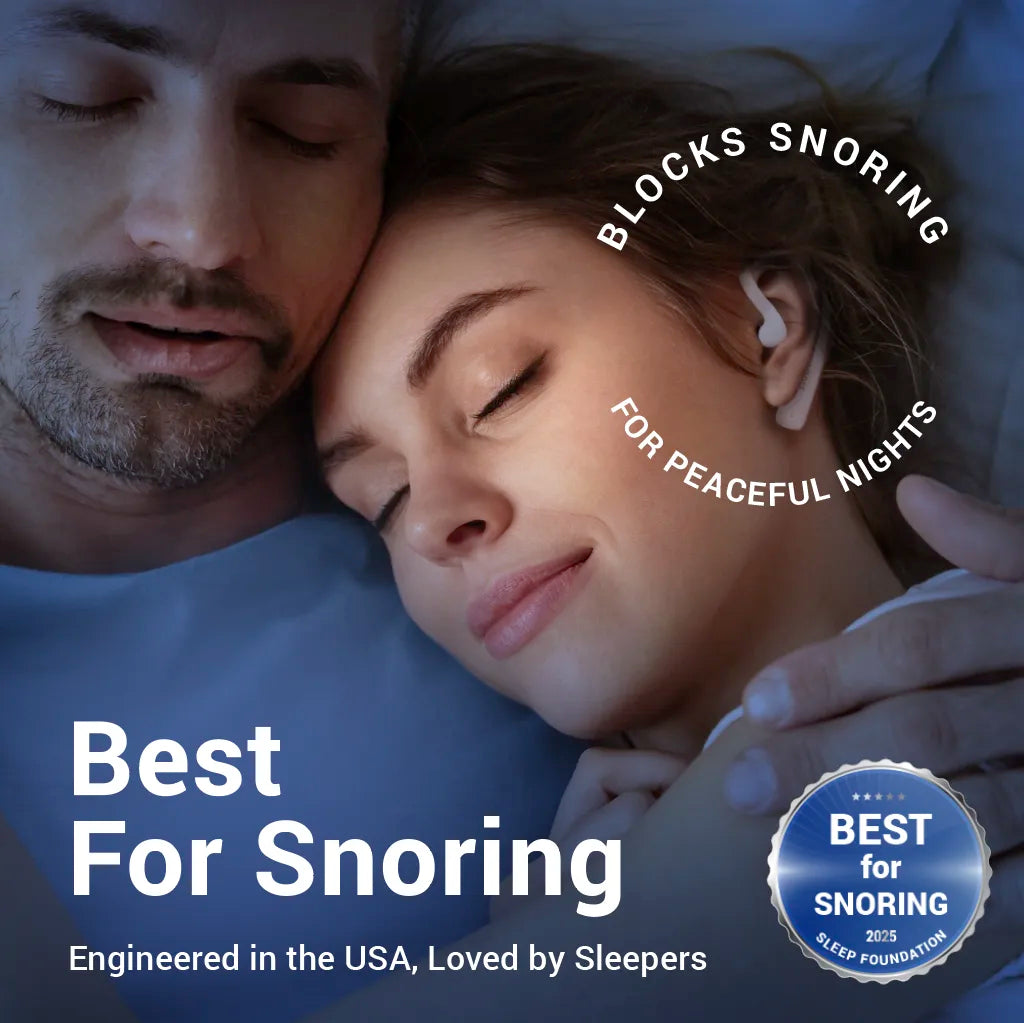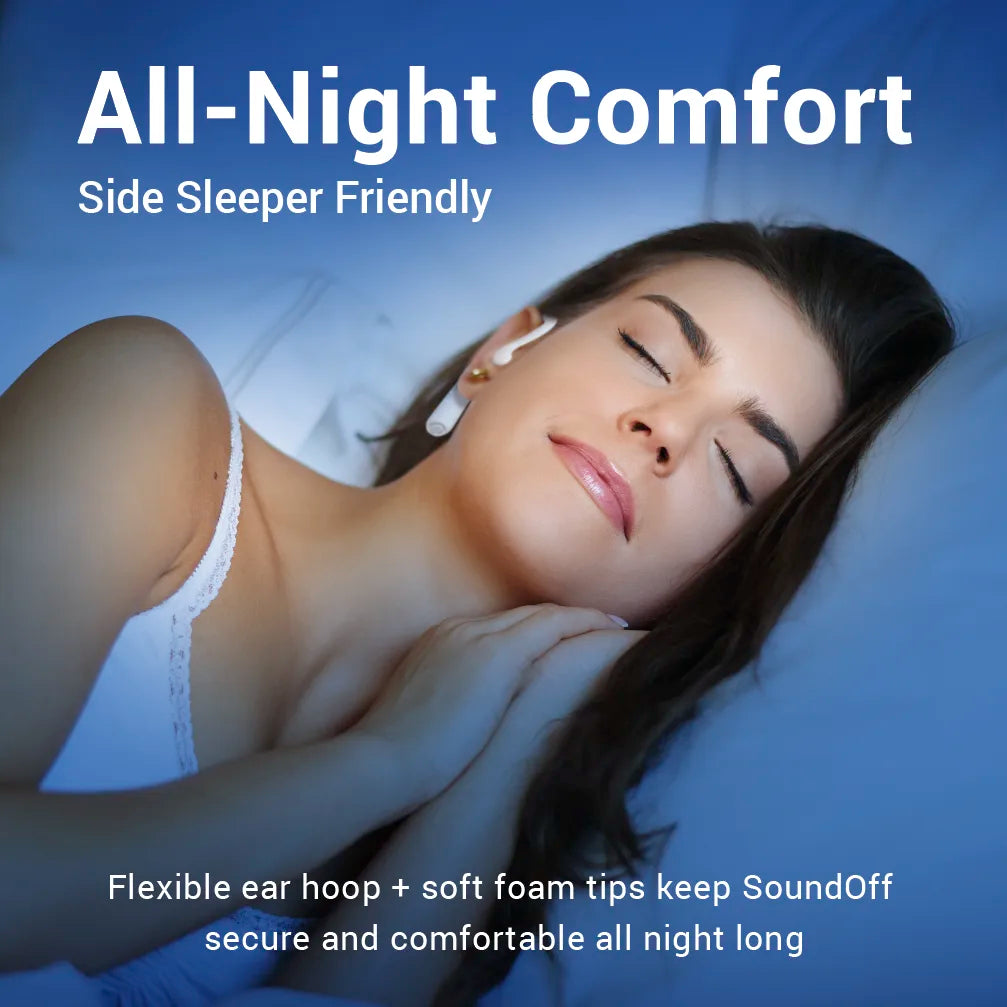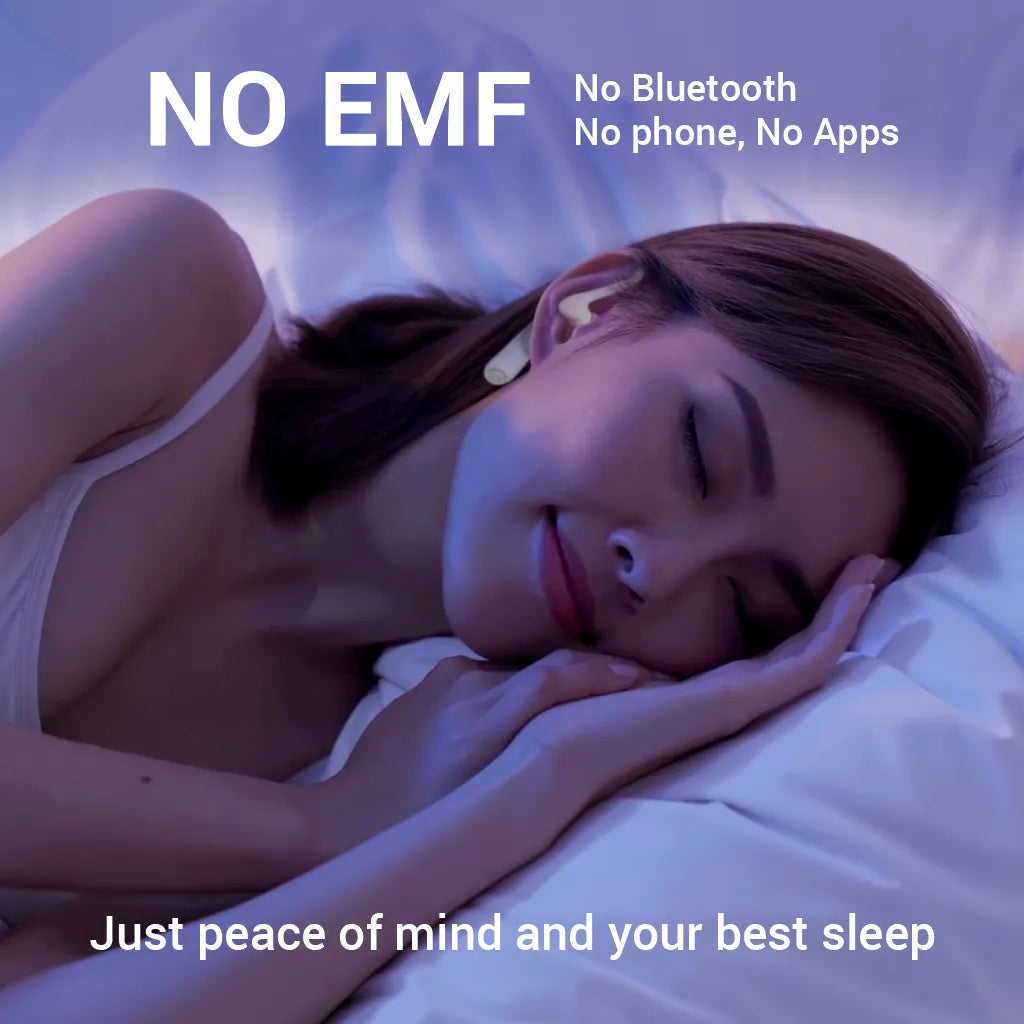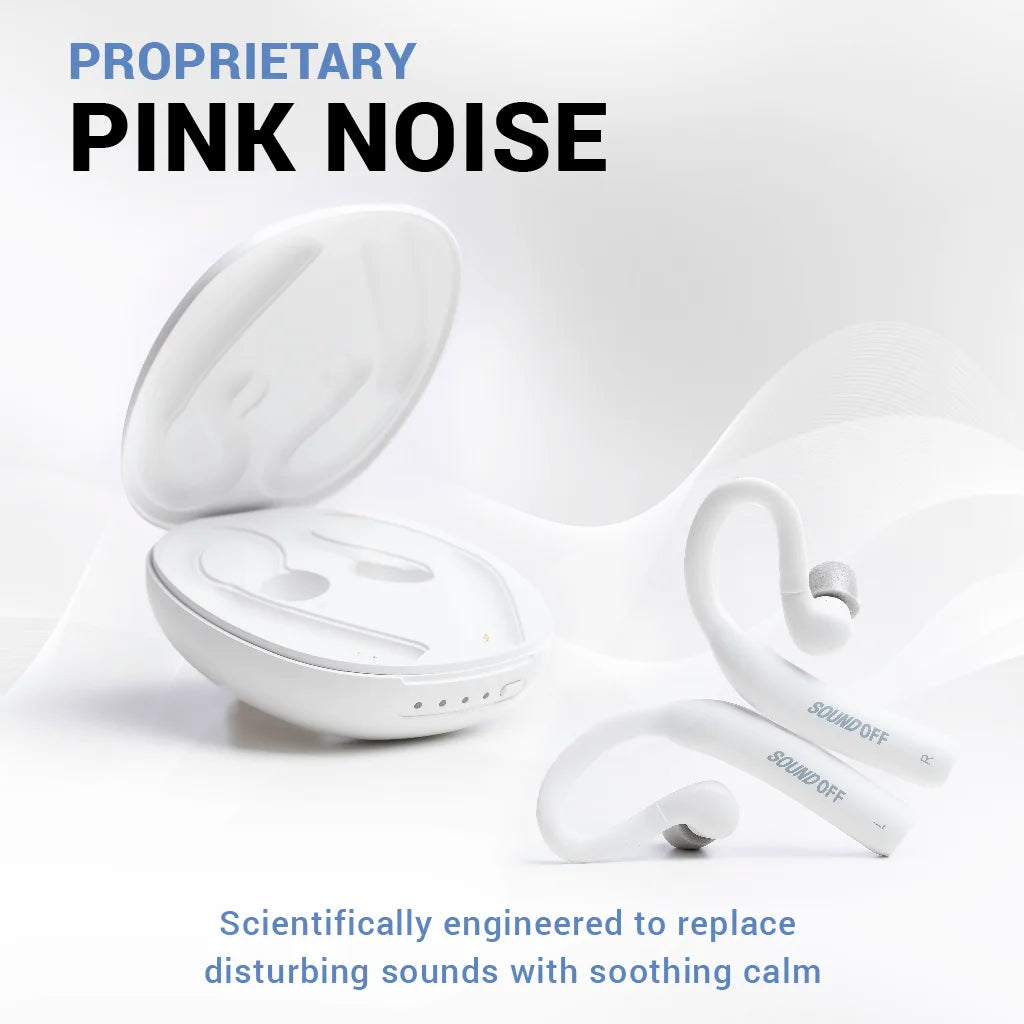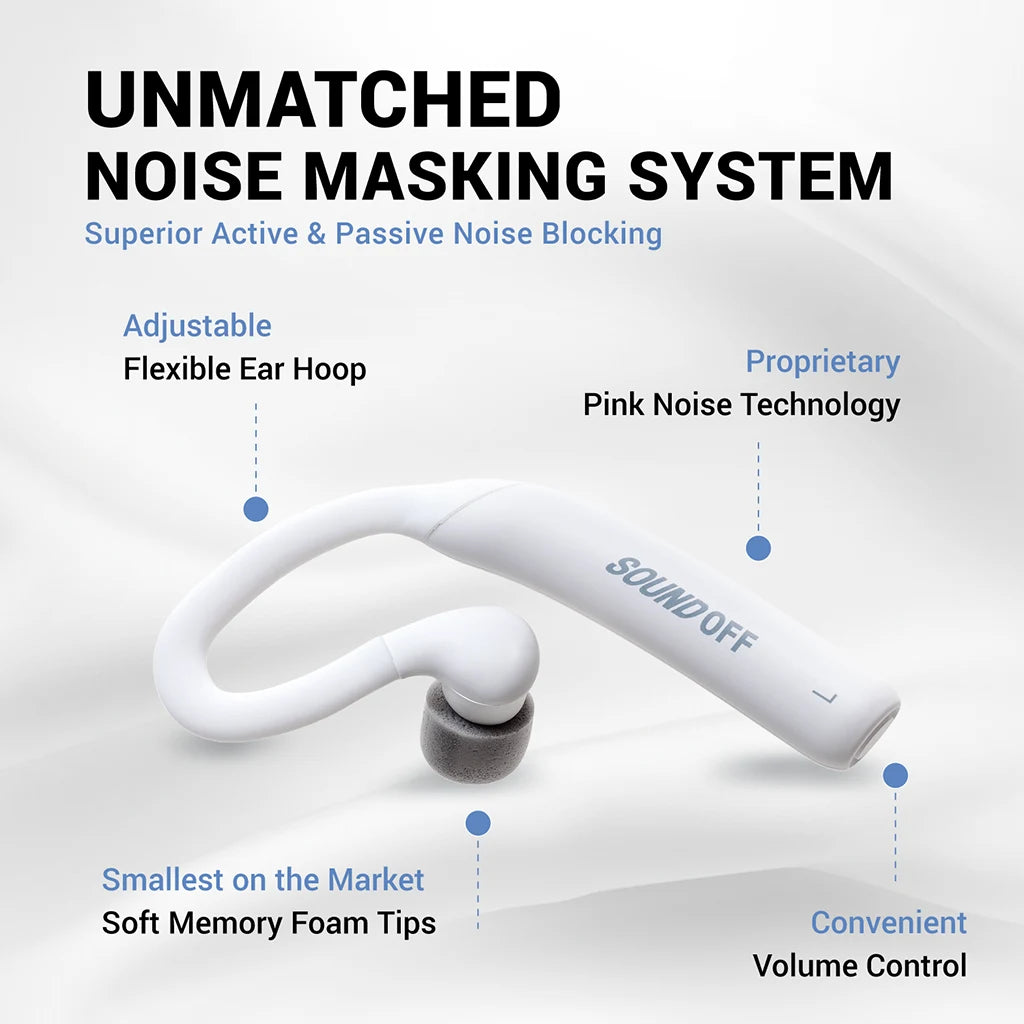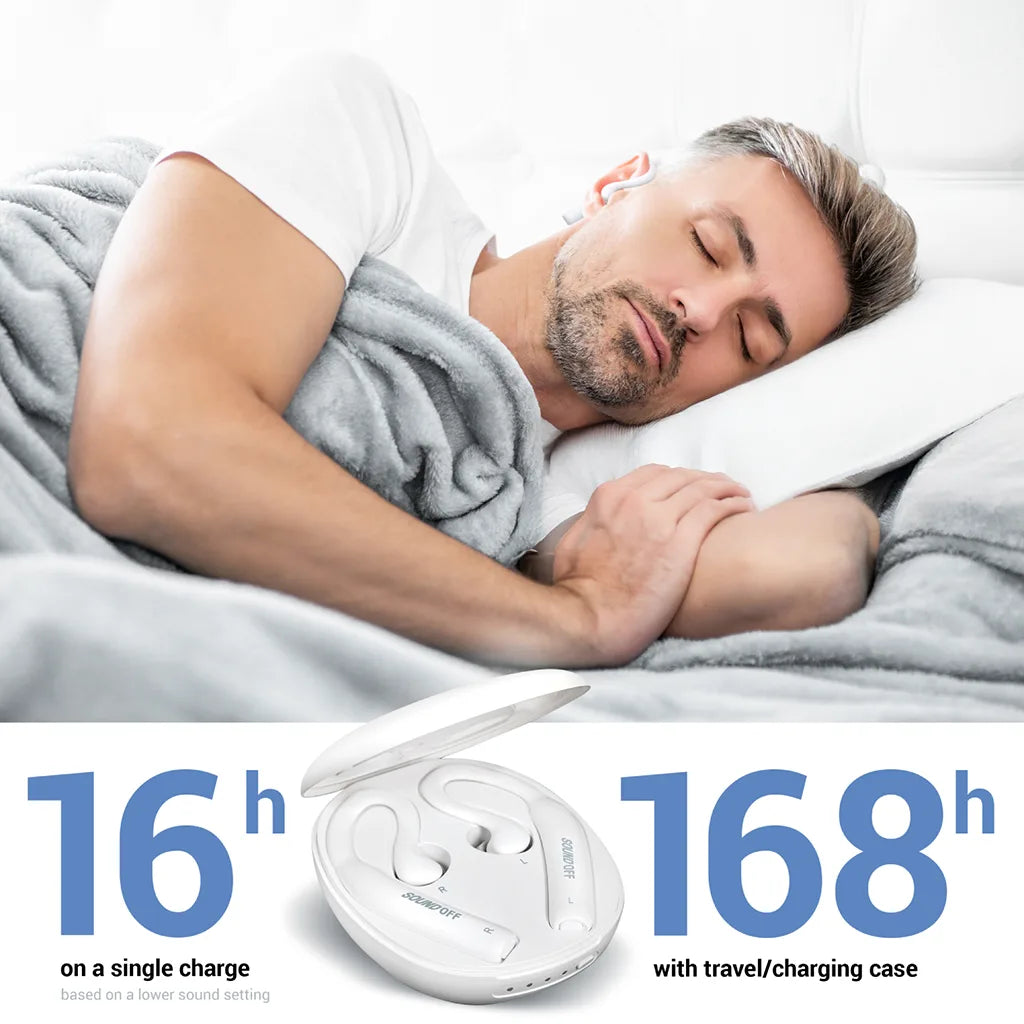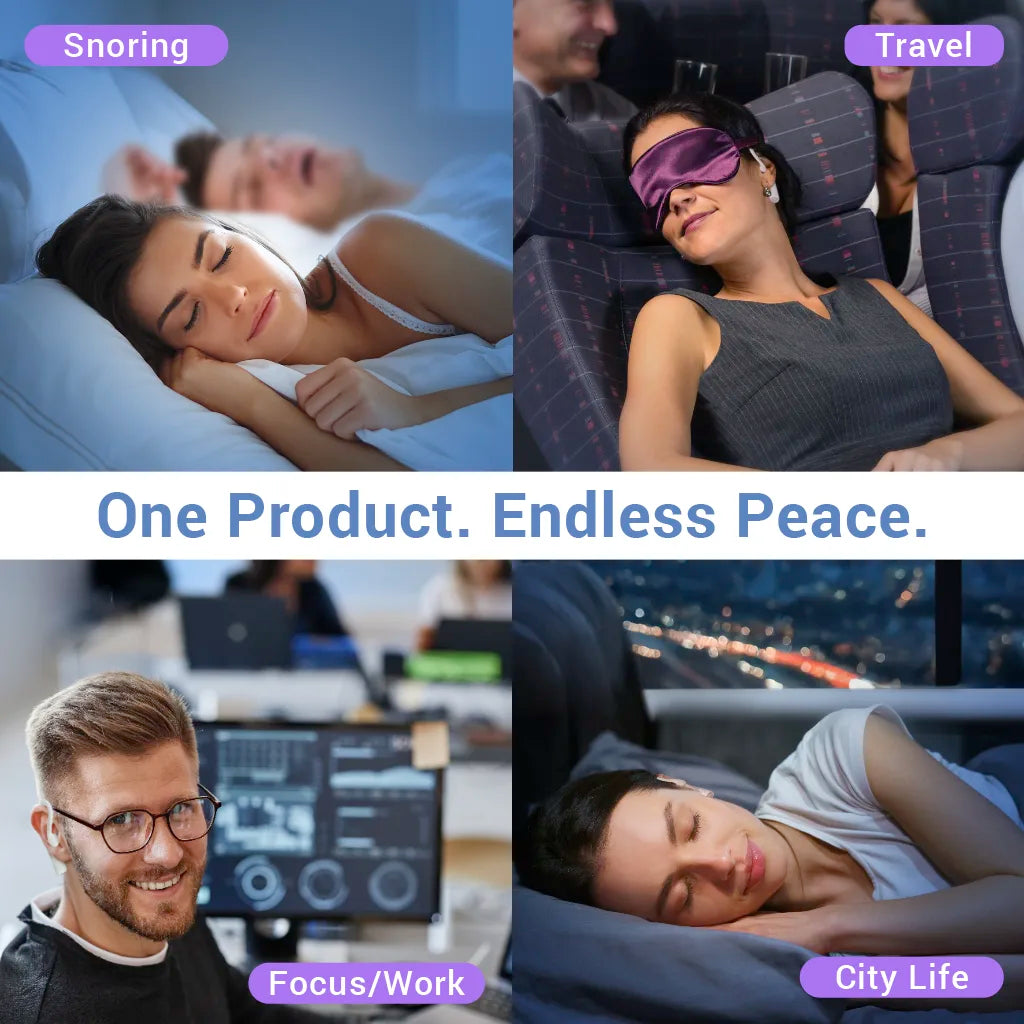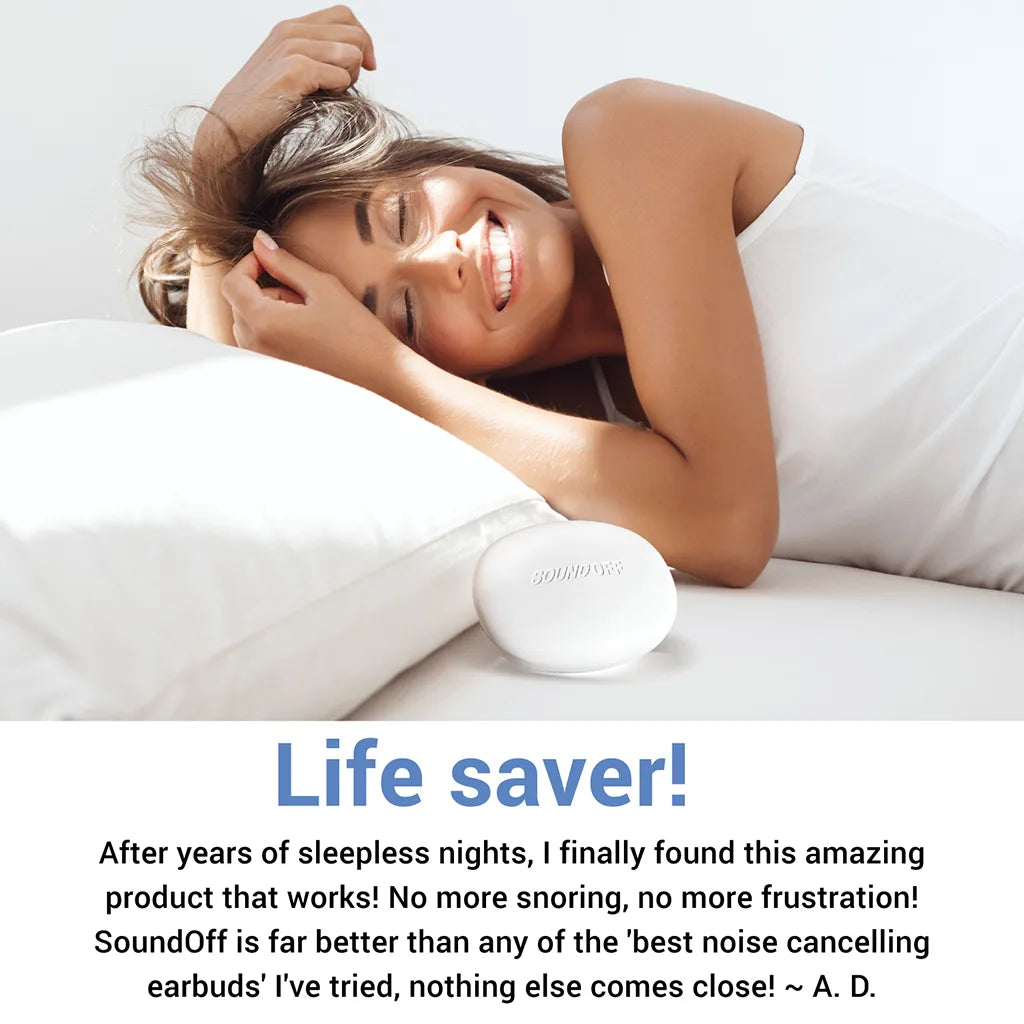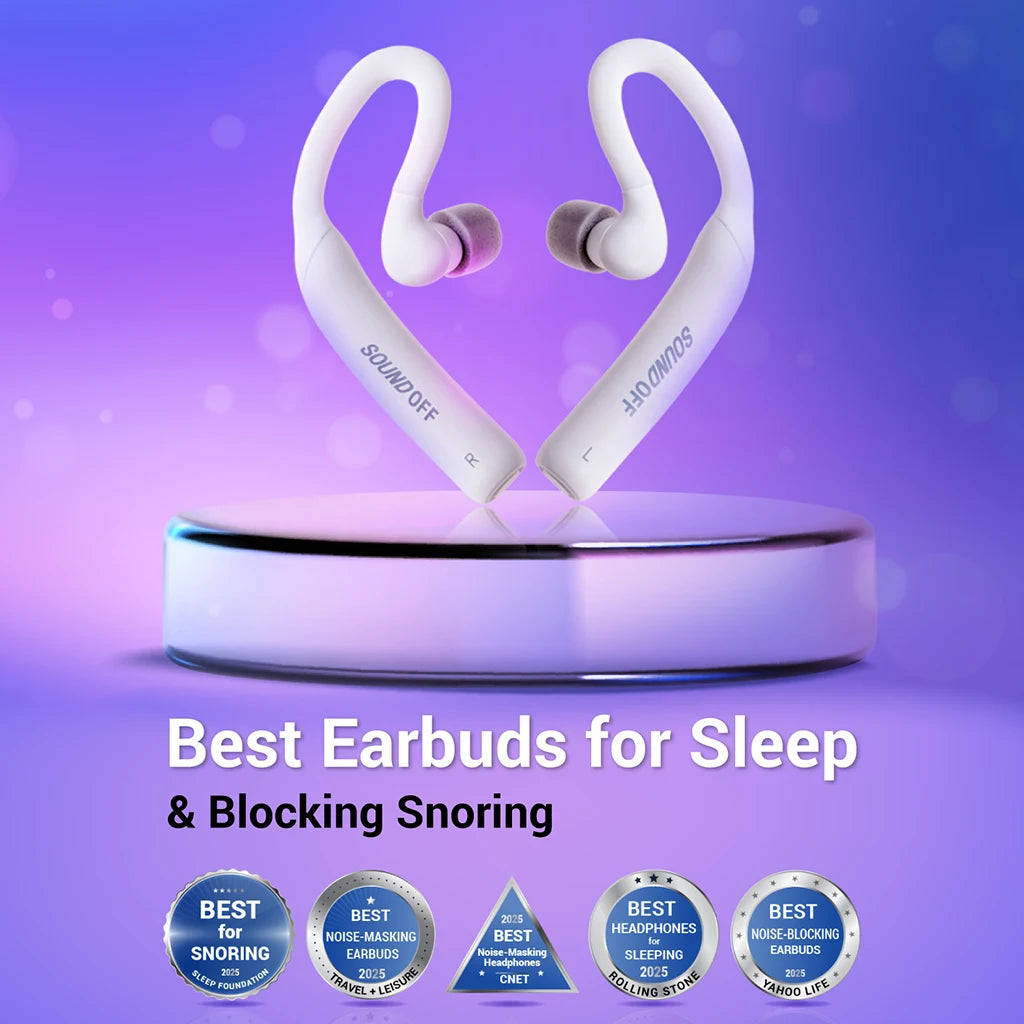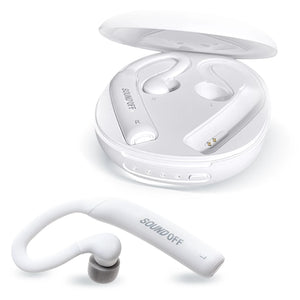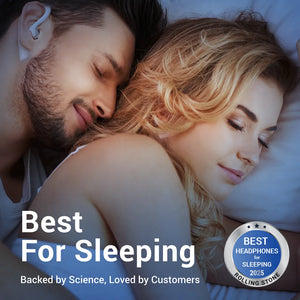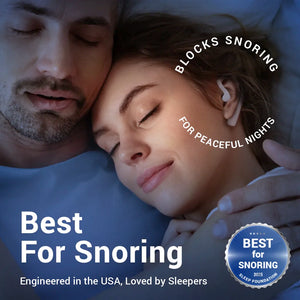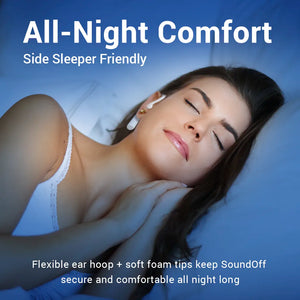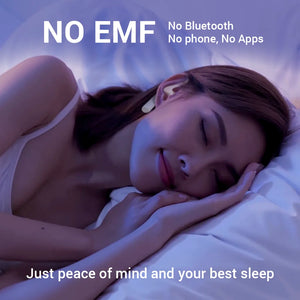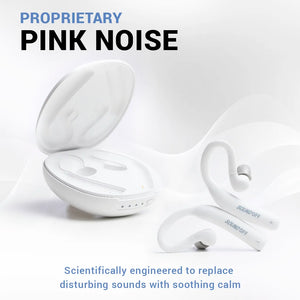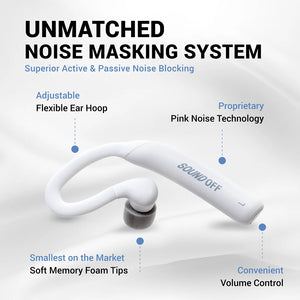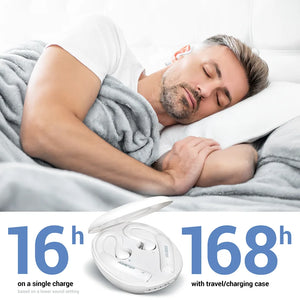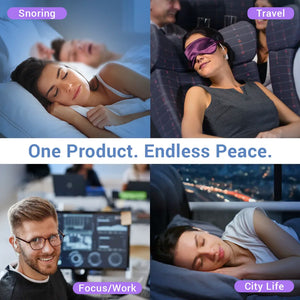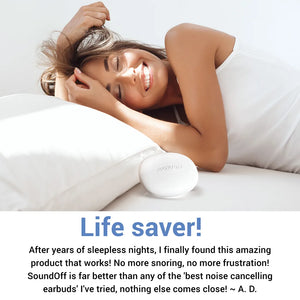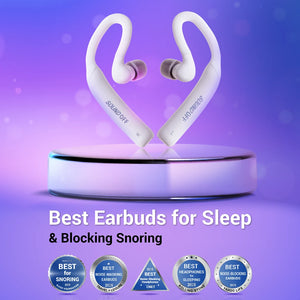
About Noise Cancelling for Sleeping
Noise Cancelling, aka ANC/Active Noise Control – or sometimes called, Noise-Reduction technology, has long dominated the noise-management marketplace. It was first developed for the aviation industry and put to wide use by pilots in cockpits; air traffic controllers in towers… and weary passengers in crowded cabins. All were looking to manage their levels of noise—and it was effective. But how effective is Noise Cancelling for Sleeping?
All Noise is not the same
Understanding the intricacies of different noise-management technologies is integral to choosing which one will best deal with the particular noise you are trying to control. “Control” meaning, of course, that you want to make it GO AWAY.
If you try Noise Cancelling earbuds for sleeping and the person in bed next to you snores like a freight train; that noise is NOT going away—and you won’t be able to ignore it.
WHY ANC is not effective for snoring
Simply put, Noise Cancellation is not designed to control this particular type of noise. Let’s look, instead, at what ANC is designed for; and then consider the better alternative for getting you through those noisy nights with your snoring partner…
What is Noise Cancelling?
In 1934, German Doctor of Philosophy and Medicine, Paul Lueg, registered a patent for ANC (Active Noise Control) listed as: Process of Silencing Sound Oscillations. In it, he describes a process of silencing sound oscillations; especially of a disturbing nature--which can be employed independently of the source of oscillation.
He further explains: the sound oscillations which are to be silenced, are taken in by a receiver and reproduced by a reproducing apparatus in the form of sounds, having an opposite phase.
Sound complicated?
Noise Cancelling Simplified
Noise Cancelling headphones listen to the external world for incoming sounds. When the ANC technology detects an incoming sound, a tiny noise-cancellation speaker emits the same tone (but inverted) in order to neutralize that sound.
To achieve the desired benefit; the headphone technology employs both passive and active Noise Cancellation.
The benefit is limited, however, as this tech doesn’t fully block out noise; it just makes it fade into the background. You still hear the noise you’re trying to escape—it just isn’t as loud.
Passive Noise Cancellation
Passive Noise Cancellation uses an insulating material to soften outside sounds. The over-the-ear headphone cup isolates the ears from the outside noise. (Used alone, this is known as Noise-Blocking; and is akin to putting a pillow over your head to muffle an annoying sound.)
Active Noise Cancellation
Active Noise Cancellation combines opposing frequencies to cancel out unwanted sounds. Using a microphone, the offending sound waves are electronically inverted and then projected out through a speaker—minus the background noise.
Creating a perfect opposing soundwave is a tricky process; however, which may explain the long road from Dr. Lueg’s initial ANC concept in 1934—to its eventual introduction to the public some 50 years later.
Sound Wave Interference
Without getting too deep into the physics, here’s what happens when two sound waves come together at the same point—and inevitably interfere with each other…
- If the waves are in phase with each other, the interference will be constructive.
- When the waves are completely in phase: The constructive interference will double the wave amplitude (wave sound volume.)
- In the event the waves are 180 degrees out of phase with each other, they will destructively interfere with each other. And… if the amplitudes are the same; noise-cancellation is achieved.

1936 Lueg ANC Patent Illustration

Dr. Leug’s theory was solid but he was ahead of his time and unfortunately lacked the resources needed to make commercially viable products.
(The first Noise Cancelling headphones would not hit the commercial market until 1989.)
The Invention of Noise-Cancelling Headphones
Despite Leug’s earlier claim, a Brooklyn inventor and pioneer of electrical and aerospace engineering is credited with inventing ANC technology in the 1950s. Dr. Lawrence Jerome Fogel submitted his ANC patents for the field of aviation. Fogel's Noise Cancelling Headphones; designed to protect pilots’ hearing and improve cockpit communication, are believed to be the first ANC headphones produced.
ANC advances continued in 1956 and 1957 through the Air Force Research Laboratory. Under the direction of Willard Meeker, earplugs and earmuffs were introduced as passive hearing protectors—this significantly enhanced Noise Cancelling’s efficacy.

Historic "First"
Noise Cancelling Headphones were first tested for public use in 1986 when civilians Jeana Yeager and Dick Rutan flew around the world in their 2-seater Rutan Voyager plane. The pilots set a new flight endurance record—and the ANC headphone prototypes were credited with saving their ears during the arduous flight.
Soon airlines were offering Noise Cancelling headphones in their business and first-class sections to help passengers block out the engine hum. Today’s enhanced ANC headphone technology is effective at blocking out about 75% of aircraft cabin noise.
That’s great, you say...
but what about my sleep?
What types of Noise will ANC block?
Noise Cancelling is best used to block constant low-frequency noises—like that airplane engine hum. The problem is most of the sounds that disturb someone’s sleep, don’t fall in that category. Noise Cancelling is no match for sudden interruptive sound blasts like car horns and barking dogs…and LOUD SNORING.
Thus...
Noise Cancelling for Sleep is not your best option
Good-quality ANC Headphones reduce higher-frequency sound passively by 15-20 decibels. You can gain another 10-20 decibel reduction by using active noise reduction. That’s a maximum of 50 decibels.
Think that can mute your snoring partner?
A recent UK study showed the average person snores at around 72.2 dB—so if you can handle the equivalent of a coffee grinder directed straight into your eardrum all night…
Don’t get me wrong, ANC is great when you want to listen to music or podcasts with less outside noise interference. It’s even known to decrease the psychological fatigue you may experience when you’ve been exposed to droning, low- frequency sounds over a long period. And... it can reduce the sound of that airplane hum to a whisper…
But your partner’s snoring? If you go with Noise Cancelling, for sleeping, that snore’s going to blast you right out of bed.
So, how do you save your sleep—and your sanity—when that chainsaw next to you is sawing logs all night?
Enter Noise Masking
Noise Masking technology works very differently than Noise Cancelling. It’s designed to handle those sudden sound blasts that are waking you up—or preventing you from going to sleep in the first place. So, if you’re looking for earbuds for snoring; you’ll definitely want Noise Masking over Noise Cancelling.
How Noise Masking Works
Noise Masking replaces the sound you are trying to escape with another sound—ideally one that is more pleasant—so you hear that sound instead of the one that is disturbing you. Typically, these electronically designed sounds mimic those found in nature.
Active & Passive Noise Masking
Earbuds for snoring should be effective both passively and actively. When these processes work accurately in tandem, the results can be astounding. Users have reported they literally no longer hear the disturbing noises that were formerly keeping them awake. From loudly-snoring partners, to a freight train rumbling down the tracks outside, this technology is allowing people to sleep right through the noise.
Active Noise Masking
The active Noise Masking tech used in our earbuds for sleeping, provides a soothing sound that helps your brain to relax so you can fall asleep and stay asleep through the night. It is a custom-shaped pink noise designed by a PhD in psychoacoustics. Pink Noise has been shown to be particularly effective in helping people relax and fall asleep.
Passive Noise Masking
SoundOff Sleep earbuds deliver this steady, soothing sound, directly into the ear. This delivery system is fortified by passive Noise Masking via comfortable Memory Foam tips which form a seal around the earbud and prevent ambient sound from entering the ear.
They also keep the earbuds snug in your ear, so you don’t have to worry about them falling out during the night. Unlike silicon ear tips, which do not attenuate sound well, but are commonly used for earbuds—these foam tips provide a noticeable boost to the Noise Masking effect.
The Perfect Alternative
Together, the Active and Passive Noise Masking components in SoundOff provide an ultra-comfortable, sound-silencing, sleep solution that cannot be found in Noise Cancelling earphones. With all this noise protection, SoundOff Noise Masking earbuds can easily mute your snoring partner—or any other loud noise that’s disturbing your sleep—up to 90 decibels.
The bottom line...
For sleeping, choose Noise Masking earbuds over Noise Cancelling if you really want to make the noise GO AWAY.

Enjoy using Noise Cancelling headphones for their intended application—and leave the sleeping to us.
Wishing you all the best sleep!
Resources:
The History of Active Noise Control
The Journal of the Acoustical Society of America
